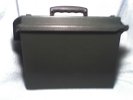|
Complex it is indeed.
Thanks for your continuous support on the fantastic Ham Mesh and the assistance given through these forums. It is indeed a pleasure to see it work.
The intention locally is to set up ham broadband networks for emergency use, with VOIP and HD cams operating at the same time, hence our hope for more bandwidth, not at the cost of network instability either. I guess we are all pioneers in respect to experimenting with the system.
We know that the mesh can be fortified and made more fault-tolerant with every node added to the mesh itself. The problem is that we don't have much nodes to play with for now, so most experiments were mostly point-to-point in essence.
I don't know then, if hypothetically speaking, if we had 40 MHz bandwidth instead of 20MHz, we could get better distances at the same maximum 15Mbt/s we managed to achieve so far....
I'll need to read into the document shared with us by K6AH. It's certainly a great read into how mesh behaviour changes, sometimes quite in a weird way, depending on network topology and node placements and a ton of other factors.
WIFI noise is one that we have noticed for sure, but going to a more remote place where we couldn't detect any commercial WIFI anywhere, the maximum throughput in ideal conditions was still 15Mbt/s - which is presumingly caused then, by the 20MHz bandwidth limit.
|
